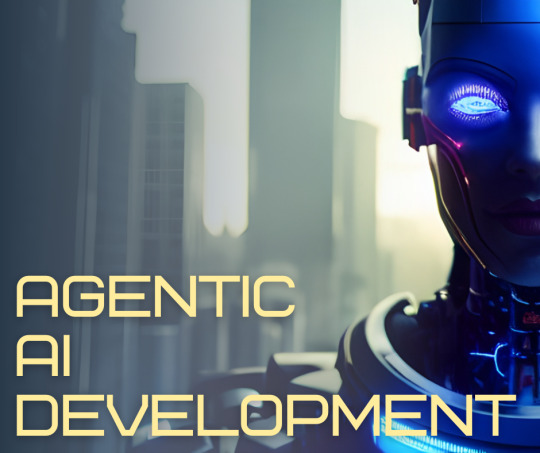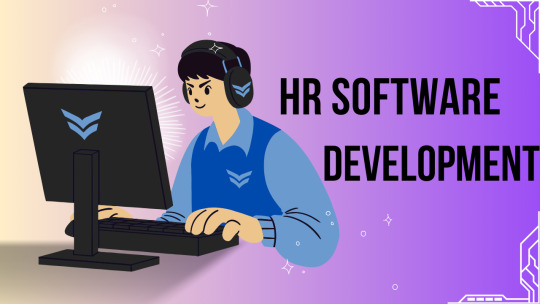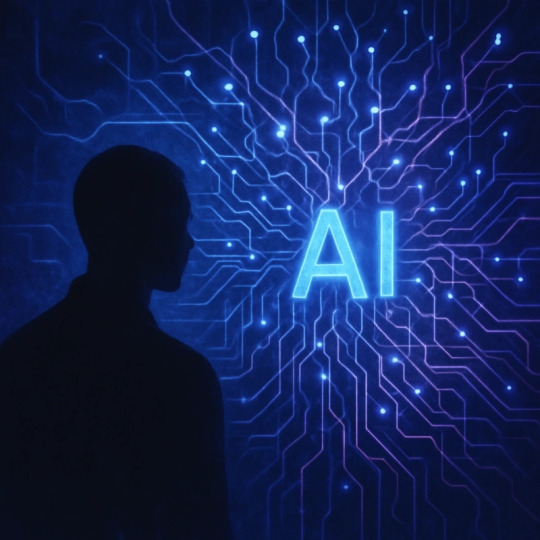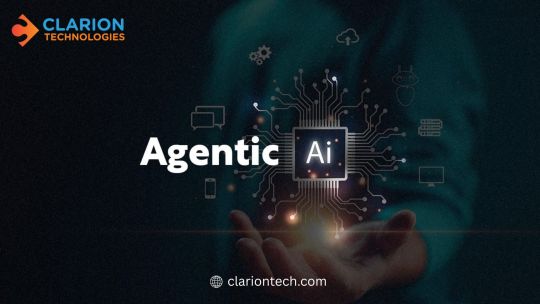#Agent AI Development
Explore tagged Tumblr posts
Text
7 Key Skills You Need to Master Agent AI Development

As artificial intelligence becomes the core engine behind modern automation, Agent AI Development is emerging as a highly specialized and in-demand discipline. From building smart assistants and autonomous workflows to creating intelligent systems that can adapt and learn, AI agents are now essential across industries like e-commerce, finance, healthcare, and logistics.
0 notes
Text
How to Build Custom AI Agents in Minutes Using Chai (Vibe Code)
Most business teams are still struggling to push the idea of an AI agent from the whiteboard to production—Why? The majority of professionals are non-technical and do not have a deep understanding of what goes on behind the scenes.
What is Chai by Langbase? 📌
Chai by Langbase is a prompt‑first service that builds, deploys, and scales AI agents straight from plain English. In much simpler terms, Chai can build AI agents for you. Users can vibe code production-ready AI agents within minutes after entering the prompt/ agent idea.
What sets Chai apart? 📌
Langbase describes Chai with three simple verbs—"Prompt. Sip. Ship," which literally means enter a prompt for your agent, sip chai tea while it vibe codes the agent for you, and ship it to your clients.
How to Build Custom AI Agents in Minutes Using Chai (Vibe Code) 📌
Step 1️⃣: Visit Chai.new.
Step 2️⃣: Enter a prompt for the AI agent.
Step 3️⃣: Chai will start by thinking and creating an overview of the AI agent.
Step 4️⃣: Deploy the AI agent.
↗️ Full Read: https://aiagent.marktechpost.com/post/how-to-build-custom-ai-agents-in-minutes-using-chai-vibe-code

#agentic ai#ai#ai agency#ai agents#artifical intelligence#vibe coding#vibe code#ai tools#langbase#Chai#software development#chatgpt#ai chatbot#productivity#app developers#dev#devs
6 notes
·
View notes
Note
If I saw Smith at the beach in nothing but board shorts, I'm gonna malfunction
He's probably not used to it, cuz he's worn a suit his entire life due to his line of job, but now he understands what humans mean by "let your skin breathe".
#i like that smith developed certain physiological similarities to humans as he began to relate to living beings#cuz humans are the closest to ai#thats why he breathes heavily when he should ignore matrix oxygen#and other things#this is just so ahh!! interesting!!#the matrix#agent smith#holy asks
6 notes
·
View notes
Text
Moments Lab Secures $24 Million to Redefine Video Discovery With Agentic AI
New Post has been published on https://thedigitalinsider.com/moments-lab-secures-24-million-to-redefine-video-discovery-with-agentic-ai/
Moments Lab Secures $24 Million to Redefine Video Discovery With Agentic AI


Moments Lab, the AI company redefining how organizations work with video, has raised $24 million in new funding, led by Oxx with participation from Orange Ventures, Kadmos, Supernova Invest, and Elaia Partners. The investment will supercharge the company’s U.S. expansion and support continued development of its agentic AI platform — a system designed to turn massive video archives into instantly searchable and monetizable assets.
The heart of Moments Lab is MXT-2, a multimodal video-understanding AI that watches, hears, and interprets video with context-aware precision. It doesn’t just label content — it narrates it, identifying people, places, logos, and even cinematographic elements like shot types and pacing. This natural-language metadata turns hours of footage into structured, searchable intelligence, usable across creative, editorial, marketing, and monetization workflows.
But the true leap forward is the introduction of agentic AI — an autonomous system that can plan, reason, and adapt to a user’s intent. Instead of simply executing instructions, it understands prompts like “generate a highlight reel for social” and takes action: pulling scenes, suggesting titles, selecting formats, and aligning outputs with a brand’s voice or platform requirements.
“With MXT, we already index video faster than any human ever could,” said Philippe Petitpont, CEO and co-founder of Moments Lab. “But with agentic AI, we’re building the next layer — AI that acts as a teammate, doing everything from crafting rough cuts to uncovering storylines hidden deep in the archive.”
From Search to Storytelling: A Platform Built for Speed and Scale
Moments Lab is more than an indexing engine. It’s a full-stack platform that empowers media professionals to move at the speed of story. That starts with search — arguably the most painful part of working with video today.
Most production teams still rely on filenames, folders, and tribal knowledge to locate content. Moments Lab changes that with plain text search that behaves like Google for your video library. Users can simply type what they’re looking for — “CEO talking about sustainability” or “crowd cheering at sunset” — and retrieve exact clips within seconds.
Key features include:
AI video intelligence: MXT-2 doesn’t just tag content — it describes it using time-coded natural language, capturing what’s seen, heard, and implied.
Search anyone can use: Designed for accessibility, the platform allows non-technical users to search across thousands of hours of footage using everyday language.
Instant clipping and export: Once a moment is found, it can be clipped, trimmed, and exported or shared in seconds — no need for timecode handoffs or third-party tools.
Metadata-rich discovery: Filter by people, events, dates, locations, rights status, or any custom facet your workflow requires.
Quote and soundbite detection: Automatically transcribes audio and highlights the most impactful segments — perfect for interview footage and press conferences.
Content classification: Train the system to sort footage by theme, tone, or use case — from trailers to corporate reels to social clips.
Translation and multilingual support: Transcribes and translates speech, even in multilingual settings, making content globally usable.
This end-to-end functionality has made Moments Lab an indispensable partner for TV networks, sports rights holders, ad agencies, and global brands. Recent clients include Thomson Reuters, Amazon Ads, Sinclair, Hearst, and Banijay — all grappling with increasingly complex content libraries and growing demands for speed, personalization, and monetization.
Built for Integration, Trained for Precision
MXT-2 is trained on 1.5 billion+ data points, reducing hallucinations and delivering high confidence outputs that teams can rely on. Unlike proprietary AI stacks that lock metadata in unreadable formats, Moments Lab keeps everything in open text, ensuring full compatibility with downstream tools like Adobe Premiere, Final Cut Pro, Brightcove, YouTube, and enterprise MAM/CMS platforms via API or no-code integrations.
“The real power of our system is not just speed, but adaptability,” said Fred Petitpont, co-founder and CTO. “Whether you’re a broadcaster clipping sports highlights or a brand licensing footage to partners, our AI works the way your team already does — just 100x faster.”
The platform is already being used to power everything from archive migration to live event clipping, editorial research, and content licensing. Users can share secure links with collaborators, sell footage to external buyers, and even train the system to align with niche editorial styles or compliance guidelines.
From Startup to Standard-Setter
Founded in 2016 by twin brothers Frederic Petitpont and Phil Petitpont, Moments Lab began with a simple question: What if you could Google your video library? Today, it’s answering that — and more — with a platform that redefines how creative and editorial teams work with media. It has become the most awarded indexing AI in the video industry since 2023 and shows no signs of slowing down.
“When we first saw MXT in action, it felt like magic,” said Gökçe Ceylan, Principal at Oxx. “This is exactly the kind of product and team we look for — technically brilliant, customer-obsessed, and solving a real, growing need.”
With this new round of funding, Moments Lab is poised to lead a category that didn’t exist five years ago — agentic AI for video — and define the future of content discovery.
#2023#Accessibility#adobe#Agentic AI#ai#ai platform#AI video#Amazon#API#assets#audio#autonomous#billion#brands#Building#CEO#CMS#code#compliance#content#CTO#data#dates#detection#development#discovery#editorial#engine#enterprise#event
2 notes
·
View notes
Text
AI Agent Development: How to Create Intelligent Virtual Assistants for Business Success
In today's digital landscape, businesses are increasingly turning to AI-powered virtual assistants to streamline operations, enhance customer service, and boost productivity. AI agent development is at the forefront of this transformation, enabling companies to create intelligent, responsive, and highly efficient virtual assistants. In this blog, we will explore how to develop AI agents and leverage them for business success.

Understanding AI Agents and Virtual Assistants
AI agents, or intelligent virtual assistants, are software programs that use artificial intelligence, machine learning, and natural language processing (NLP) to interact with users, automate tasks, and make decisions. These agents can be deployed across various platforms, including websites, mobile apps, and messaging applications, to improve customer engagement and operational efficiency.
Key Features of AI Agents
Natural Language Processing (NLP): Enables the assistant to understand and process human language.
Machine Learning (ML): Allows the assistant to improve over time based on user interactions.
Conversational AI: Facilitates human-like interactions.
Task Automation: Handles repetitive tasks like answering FAQs, scheduling appointments, and processing orders.
Integration Capabilities: Connects with CRM, ERP, and other business tools for seamless operations.
Steps to Develop an AI Virtual Assistant
1. Define Business Objectives
Before developing an AI agent, it is crucial to identify the business goals it will serve. Whether it's improving customer support, automating sales inquiries, or handling HR tasks, a well-defined purpose ensures the assistant aligns with organizational needs.
2. Choose the Right AI Technologies
Selecting the right technology stack is essential for building a powerful AI agent. Key technologies include:
NLP frameworks: OpenAI's GPT, Google's Dialogflow, or Rasa.
Machine Learning Platforms: TensorFlow, PyTorch, or Scikit-learn.
Speech Recognition: Amazon Lex, IBM Watson, or Microsoft Azure Speech.
Cloud Services: AWS, Google Cloud, or Microsoft Azure.
3. Design the Conversation Flow
A well-structured conversation flow is crucial for user experience. Define intents (what the user wants) and responses to ensure the AI assistant provides accurate and helpful information. Tools like chatbot builders or decision trees help streamline this process.
4. Train the AI Model
Training an AI assistant involves feeding it with relevant datasets to improve accuracy. This may include:
Supervised Learning: Using labeled datasets for training.
Reinforcement Learning: Allowing the assistant to learn from interactions.
Continuous Learning: Updating models based on user feedback and new data.
5. Test and Optimize
Before deployment, rigorous testing is essential to refine the AI assistant's performance. Conduct:
User Testing: To evaluate usability and responsiveness.
A/B Testing: To compare different versions for effectiveness.
Performance Analysis: To measure speed, accuracy, and reliability.
6. Deploy and Monitor
Once the AI assistant is live, continuous monitoring and optimization are necessary to enhance user experience. Use analytics to track interactions, identify issues, and implement improvements over time.
Benefits of AI Virtual Assistants for Businesses
1. Enhanced Customer Service
AI-powered virtual assistants provide 24/7 support, instantly responding to customer queries and reducing response times.
2. Increased Efficiency
By automating repetitive tasks, businesses can save time and resources, allowing employees to focus on higher-value tasks.
3. Cost Savings
AI assistants reduce the need for large customer support teams, leading to significant cost reductions.
4. Scalability
Unlike human agents, AI assistants can handle multiple conversations simultaneously, making them highly scalable solutions.
5. Data-Driven Insights
AI assistants gather valuable data on customer behavior and preferences, enabling businesses to make informed decisions.
Future Trends in AI Agent Development
1. Hyper-Personalization
AI assistants will leverage deep learning to offer more personalized interactions based on user history and preferences.
2. Voice and Multimodal AI
The integration of voice recognition and visual processing will make AI assistants more interactive and intuitive.
3. Emotional AI
Advancements in AI will enable virtual assistants to detect and respond to human emotions for more empathetic interactions.
4. Autonomous AI Agents
Future AI agents will not only respond to queries but also proactively assist users by predicting their needs and taking independent actions.
Conclusion
AI agent development is transforming the way businesses interact with customers and streamline operations. By leveraging cutting-edge AI technologies, companies can create intelligent virtual assistants that enhance efficiency, reduce costs, and drive business success. As AI continues to evolve, embracing AI-powered assistants will be essential for staying competitive in the digital era.
5 notes
·
View notes
Text
rvb sure is an awful awful show i watched while having a depressive breakdown at seventeen. there isnt even a good version that lives in my head. there's just a half dozen specific elements i will carry tucked btwn my ribs for the rest of my life
#yelling at clouds#like. boy best friends life saving surgery where one gives the other a significant portion of his major organs...#giving an AI dissociative identity disorder. putting the AI alters in people's brains.#developing a dissociative disorder when they put an AI fragment in your brain and it immediately has a breakdown#realising the AI your dad tortured into developing DID is a sibling to you actually. doing crime together about it.#must a show be good. is it not enough for agent carolina to be there
12 notes
·
View notes
Text
AI Copilots for Business Intelligence: Faster Insights, Better Outcomes

In the data-driven economy, businesses are sitting on mountains of information—sales figures, customer behavior, marketing metrics, supply chain stats, and more. But transforming that data into actionable insight? That’s where the real challenge begins.
Enter AI copilots for Business Intelligence (BI)—intelligent assistants that don’t just process data, but understand it, surface what matters, and guide decision-makers toward better outcomes, faster.
This is more than just a dashboard. It’s BI, augmented.
🔍 What Is an AI Copilot for Business Intelligence?
An AI copilot for BI is an AI-powered assistant embedded within your analytics tools or enterprise platforms. Unlike traditional BI dashboards that require users to ask the right questions and slice data manually, copilots:
Interpret your data contextually,
Anticipate the insights you need,
Generate visualizations,
And even suggest next steps.
Think of it as a data-savvy teammate who can instantly find meaning in complex numbers and help you act on it—without needing SQL queries or advanced analytics skills.
⚡ Why It Matters: The BI Bottleneck
Many companies struggle to turn their BI investments into real-world value. Why?
Data overload: Too much data, too little time.
Complex tools: Dashboards often require training and experience.
Slow insights: Getting answers can take days or weeks, especially when requests are funneled through analysts.
Missed opportunities: Delays in insight = delays in action.
AI copilots solve these problems by bridging the gap between data and decisions.
🚀 What AI Copilots Can Do in BI
1. Natural Language Queries
Ask questions like, “What were our top-performing products last quarter?” and get instant answers with charts, summaries, or recommended actions.
2. Automated Reporting
Let copilots generate recurring reports, detect anomalies, and highlight trends—without you needing to click through dashboards.
3. Predictive Analytics
AI copilots can forecast sales, churn, or inventory issues using real-time models that update as your data evolves.
4. Personalized Insights
They learn from your role, preferences, and past queries—delivering the insights that matter most to you.
5. Collaboration-Ready
Share insights directly in tools like Slack, Teams, or email. Copilots can even generate executive summaries or action plans automatically.
🧠 Real-World Use Cases
Sales & Marketing: Identify which campaigns are driving ROI and predict which leads are most likely to convert.
Finance: Flag unusual spending or automate monthly performance reviews.
Operations: Monitor inventory levels in real time and alert teams before stockouts occur.
Customer Success: Detect patterns in churn and recommend proactive outreach strategies.
🛠 Tools Enabling This Shift
Many major platforms now embed AI copilots or offer integrations:
Microsoft Power BI Copilot
Google Looker with Gemini AI
Tableau GPT
ThoughtSpot Sage
Zoho Analytics AI assistant
Startups and third-party tools like MonkeyLearn, Narrative BI, or ChatGPT plugins for analytics are also making waves.
📈 Faster Insights = Competitive Advantage
Speed matters in today’s business climate. When your competitors are reacting in real time and you’re still waiting for last month’s report to be compiled, you’re already behind.
AI copilots empower your team to:
Act faster
Stay focused
Make data-driven decisions without bottlenecks
🔒 What About Trust and Data Security?
Most modern copilots are designed with enterprise-grade security, data governance, and role-based access controls. As with any BI tool, it’s important to:
Define clear data permissions,
Audit AI suggestions,
And ensure your AI is only as “smart” as the data it’s given.
🏁 Final Thoughts: Don’t Just Visualize—Actualize
BI used to be about making charts. Today, it’s about making decisions—and AI copilots are changing the game.
They reduce the distance between data and action, democratize insight, and allow every stakeholder—not just analysts—to become data fluent.
In a world where information moves at the speed of thought, having an AI copilot in your BI stack isn't optional. It’s essential.
Want better outcomes? Start with better (and faster) insights. Let an AI copilot show you the way.
1 note
·
View note
Text

HR Software Development refers to the process of designing and building customized digital solutions to manage human resource operations such as recruitment, onboarding, payroll, performance management, and employee engagement.
0 notes
Text
Smarter Enterprises Start with AI Agent Development
A futuristic image illustrating how AI agent development company are reshaping enterprise efficiency—automating workflows, reducing overhead, and powering digital-first growth strategies.

0 notes
Text
Top 5 Use Cases of Agentic AI Development in E-commerce

The rise of e-commerce has transformed how businesses operate, how customers shop, and how brands connect with their audiences. However, as online shopping platforms expand, so do the expectations of modern consumers. Personalization, instant support, and seamless navigation are no longer optional—they are the standard. In this demanding environment, Agentic AI Development is emerging as a game-changing solution that empowers e-commerce platforms to operate smarter, faster, and more autonomously.
0 notes
Text
Discover how Dubai’s leading enterprises are transforming operations with AI agents—and why RW Infotech is at the center of it. Explore how intelligent AI solutions are shaping the future of automation in Dubai, showcasing RW Infotech as the expert AI agents development agency in Dubai. Learn about their strategic approach, industry-specific innovations, and real business results that make them a trusted technology partner in the region’s digital revolution.
0 notes
Text
Clarion - Advanced Generative and Agentic AI Services
Given how quickly AI is developing, companies trying to remain ahead are now investigating generative AI development services and agentic AI consulting services to promote smarter automation, individualized consumer experiences, and large-scale innovation.
By enabling systems that can take initiative, make decisions, and behave independently based on objectives and environmental circumstances, agentic AI goes beyond conventional machine learning and generative AI. This change enables companies to create intelligent digital agents that can manage intricate client interactions, workflows, and adaptive problem-solving with little assistance from humans.
What Is Agentic AI?
The term "agentic AI" describes AI systems built to function as independent agents that can see, reason, and act to accomplish predetermined goals. To comprehend complicated inputs and react dynamically, these systems make use of massive language models, reinforcement learning, and sophisticated generative models.
Agentic AI facilitates proactive decision-making, assisting companies in their transition to intelligent, goal-driven automation, in contrast to standard AI systems, which are reactive.
Clarion’s Agentic AI Consulting Services
Clarion Technologies offers end-to-end agentic AI consulting services to help businesses identify, plan, and implement agentic AI solutions tailored to their industry needs.
Our consulting process includes:
✅ Opportunity Assessment: Identify areas where agentic AI can drive measurable improvements.
✅ Strategy Roadmap: Align AI initiatives with your business goals for sustainable outcomes.
✅ Tech Stack Planning: Choose the right models, frameworks, and architecture.
✅ Proof of Concept Development: Test agentic AI use cases before full-scale deployment.
✅ Implementation & Scaling: Seamless integration into your workflows with ongoing optimization.
Whether it’s automating complex support systems, intelligent process automation, or dynamic resource management, Clarion ensures your agentic AI journey is practical and impactful.

Generative AI Development Services by Clarion
Generative AI is transforming industries by enabling content creation, personalized experiences, and advanced problem-solving through generative models like GPT, DALL-E, and custom LLMs. Clarion’s generative AI development services help businesses build solutions that leverage these models for innovation and efficiency.
We specialize in:
✅ Custom generative model fine-tuning and deployment
✅ AI-powered chatbots and virtual assistants
✅ Automated content generation for marketing and customer support
✅ Generative design in creative and manufacturing industries
✅ Predictive and prescriptive analytics using generative models
From enhancing customer service with advanced chatbots to creating personalized product recommendations, Clarion’s team helps your business stay ahead with practical, generative AI solutions.
Industries We Serve
Clarion delivers agentic AI consulting services and generative AI development services across industries, including:
Healthcare: Intelligent patient engagement, predictive diagnostics, and automated documentation.
Retail & eCommerce: Personalized shopping assistants and automated content generation.
Finance: Fraud detection, personalized financial advice, and intelligent reporting.
Manufacturing: Generative design optimization and predictive maintenance.
Education: Intelligent tutoring systems and content generation.
Why Choose Clarion for Agentic and Generative AI?
✅ 20+ Years of Technology Leadership
✅ Access to AI/ML Engineers and Data Scientists
✅ End-to-End Solution Delivery (Consulting, Development, Deployment)
✅ Agile, Transparent Project Management
✅ Custom Engagement Models for Startups, SMBs, and Enterprises
Clarion’s approach ensures that your AI initiatives align with business objectives, delivering measurable ROI and competitive advantage.
Take the Next Step in Your AI Journey
Embracing agentic AI consulting services and generative AI development services will future proof your business, enabling you to create intelligent systems that evolve with your customers and markets.
Ready to build the next generation of intelligent solutions for your business? Partner with Clarion to transform your AI ambitions into impactful reality.
#generative ai development services#agentic ai development company#agentic ai development services#best agentic ai solutions#agentic ai service providers#agentic ai consulting services#agentic ai software development services#ai agent development solutions
0 notes
Text
AI Agents: The Next Big Shift After Generative AI 🤖
We’ve all seen the power of Generative AI — tools like ChatGPT that generate content, answer questions, and assist with creative tasks.
But here’s the thing — generating content isn’t the same as achieving a goal.
That’s where AI Agent Models come in.
Unlike generative AI, AI Agents take action. They can: ✅ Make autonomous decisions ✅ Solve problems end-to-end ✅ Learn and improve without human input ✅ Drive initiatives, not just respond to prompts
This shift from passive response to autonomous execution is massive.
Businesses don’t just want answers anymore — they want smart systems that act, adapt, and add real value without being micromanaged.
AI Agents are the bridge to smarter automation and greater productivity.
We're moving from a world of "Tell me what to do" to "Let me do it for you."
Are you ready for this transformation? Contact Us - https://cizotech.com/
#ai#cizotechnology#techinnovation#ios#app developers#mobileappdevelopment#appdevelopment#innovation#iosapp#mobileapps#aiagents#ai agents#aiforbusiness#techtrends#enterpriseai#automation#software
0 notes
Text
Custom AI Agent Development Services for Enterprise Automation

Custom AI agent development services for enterprise automation deliver intelligent, task-oriented agents tailored to business workflows. These agents optimize operations by automating decision-making, data processing, and system integration across departments.
0 notes
Text
AI Development: Powering the Future of Digital Innovation

Artificial Intelligence (AI) development is at the heart of the technological revolution reshaping industries, societies, and everyday life. What once seemed like science fiction is now an essential part of our reality. From intelligent virtual assistants to advanced robotics, AI is driving innovation at an unprecedented pace.
This article delves into the world of AI development—exploring its foundations, applications, benefits, challenges, and what lies ahead.
What Is AI Development?
AI development refers to the creation and enhancement of systems that simulate human intelligence. These systems can analyze data, learn from experience, solve problems, and make decisions with minimal human intervention.
AI development combines various disciplines and technologies, such as:
Machine Learning (ML): A technique where machines learn from data and improve over time.
Deep Learning: A type of ML that uses neural networks to solve highly complex problems, such as image or speech recognition.
Natural Language Processing (NLP): Enabling machines to understand, interpret, and respond to human language.
Computer Vision: Allowing machines to "see" and analyze visual inputs like photos and videos.
Reinforcement Learning: Teaching machines to learn through interaction with their environment by maximizing rewards.
Key Steps in AI Development
Developing AI systems involves several fundamental steps:
1. Identify the Problem
AI projects start with clearly defining the problem or objective, such as improving customer service or automating quality checks.
2. Gather and Prepare Data
Data is the fuel for AI. Collecting, cleaning, and labeling relevant datasets is crucial for training models effectively.
3. Choose and Build the Model
Developers select appropriate algorithms and design models suited to the task—whether it's classification, forecasting, or object detection.
4. Train the Model
Training involves feeding data into the model so it can learn to recognize patterns and make accurate predictions.
5. Test and Validate
Testing ensures that the model works correctly on unseen data, preventing overfitting and improving performance.
6. Deploy and Integrate
Once validated, the AI model is deployed into real-world applications, products, or services.
7. Monitor and Update
AI models require ongoing monitoring to ensure continued accuracy and efficiency as new data becomes available.
Applications of AI Development Across Industries
AI development is transforming multiple sectors:
Healthcare
Medical Imaging: AI aids in diagnosing diseases from X-rays, MRIs, and CT scans.
Predictive Analytics: Forecasting disease outbreaks or patient health risks.
Virtual Health Assistants: Providing personalized health advice and appointment scheduling.
Finance
Fraud Detection: Identifying unusual transactions and preventing financial crimes.
Algorithmic Trading: Making rapid investment decisions based on market data.
Credit Scoring: Assessing creditworthiness using advanced risk models.
Retail and E-commerce
Recommendation Systems: Suggesting products based on customer behavior.
Inventory Management: Optimizing stock levels with demand forecasting.
Chatbots: Handling customer inquiries and support 24/7.
Manufacturing
Predictive Maintenance: Identifying equipment issues before failures occur.
Quality Control: Inspecting products automatically through computer vision.
Process Automation: Streamlining production lines with AI robotics.
Transportation
Autonomous Vehicles: Self-driving cars and drones navigating through traffic.
Traffic Management: Optimizing traffic flow using real-time data.
Route Optimization: Enhancing logistics and delivery services.
Benefits of AI Development
AI offers a wide range of advantages for businesses and consumers:
Efficiency: Automates repetitive and time-consuming tasks.
Accuracy: Reduces errors and improves precision in decision-making.
Cost Savings: Cuts operational costs by optimizing processes.
Speed: Processes large datasets quickly, enabling faster decisions.
Personalization: Tailors services and products to individual needs.
Challenges in AI Development
Despite its enormous potential, AI development also presents significant challenges:
Data Privacy and Security
AI requires access to large datasets, raising concerns over data misuse and privacy breaches.
Bias and Fairness
AI models can unintentionally reflect biases present in training data, leading to unfair or discriminatory outcomes.
Transparency and Explainability
Many advanced AI systems operate as “black boxes,” making it difficult to understand how they reach their decisions.
Regulatory Compliance
As AI grows, governments are introducing regulations to ensure ethical, safe, and responsible use.
High Resource Requirements
Developing and deploying advanced AI models often requires significant computational power and technical expertise.
Generative AI: Shaping Creativity and Automation
Generative AI has gained immense popularity, as it creates new content such as text, images, audio, and even video. Tools like ChatGPT, image generators, and AI music composers are pushing the boundaries of creative industries.
Common Uses of Generative AI:
Automated content generation for blogs, ads, and social media.
Graphic design and digital artwork creation.
Personalized marketing campaigns.
Virtual assistants that can generate human-like conversations.
Emerging Trends in AI Development
AI development continues to evolve, with several key trends shaping its future:
1. Edge AI
AI models are increasingly running on edge devices like smartphones and IoT sensors, enabling faster processing and better privacy protection.
2. AI-Enhanced Software Development
AI tools are helping developers write, test, and debug code more efficiently, accelerating software development.
3. Explainable AI (XAI)
There’s a growing push for AI systems to be more interpretable and transparent, allowing users to understand their decisions.
4. Sustainable AI
AI researchers are focusing on developing energy-efficient models and reducing the carbon footprint of AI workloads.
5. Autonomous AI Agents
AI-powered agents are being developed to autonomously complete complex tasks in dynamic environments, from logistics to cybersecurity.
The Future of AI Development
Looking ahead, AI will become even more integrated into daily life and work:
Artificial General Intelligence (AGI): Efforts continue toward developing AGI systems capable of performing any intellectual task that humans can do.
AI Accessibility: Platforms offering low-code or no-code AI solutions are making AI development accessible to non-technical users.
Human-AI Collaboration: Future systems will be designed to work alongside humans, complementing their skills rather than replacing them.
Ethical AI Frameworks: Organizations and governments are creating guidelines to ensure responsible AI development focused on fairness, accountability, and safety.
Conclusion
AI development is revolutionizing the way businesses operate, solve problems, and deliver value. From automation and predictive insights to personalized experiences, AI has firmly established itself as a catalyst for innovation.
However, this journey is not without challenges. Developers must navigate issues such as data privacy, bias, and ethical responsibility while continuing to push technological boundaries.
In the coming years, AI will become even more powerful and pervasive. Those who embrace its potential and prioritize responsible development will shape the future—creating a world where humans and intelligent systems work together to achieve remarkable outcomes.
0 notes
Text

Spring Boot development is a streamlined approach to building Java-based applications using the Spring framework. It simplifies backend development by offering auto-configuration, embedded servers, and minimal setup, enabling developers to create scalable, secure, and production-ready applications quickly.
0 notes